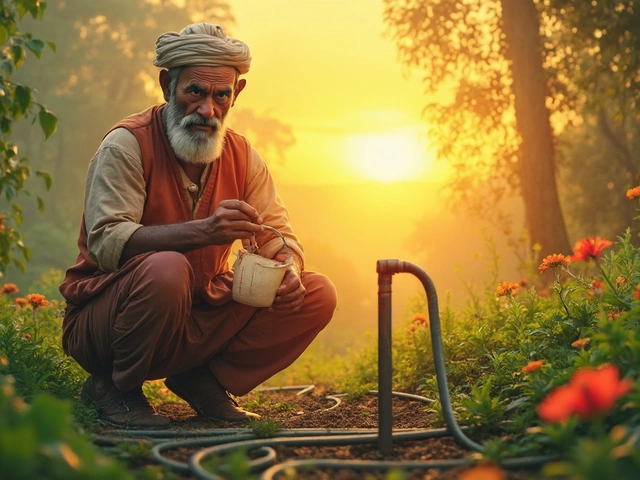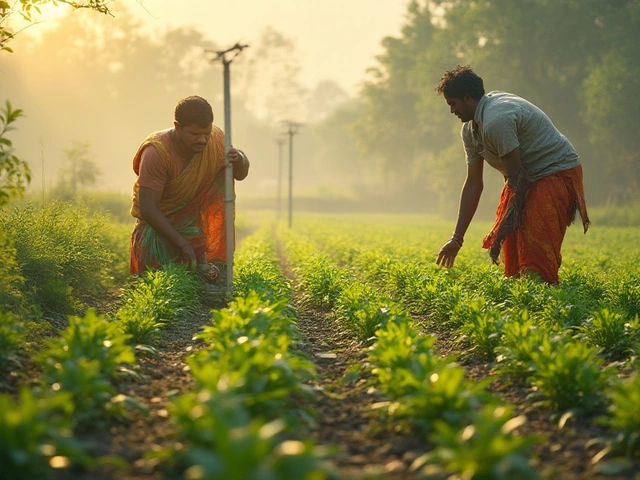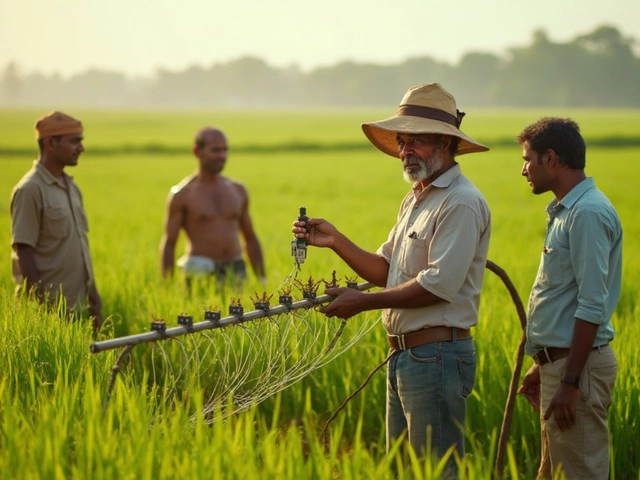If you've got a garden, you probably know the struggle of figuring out how much water those plants really need. Drip irrigation sounds fancy, but it's just a neat way of making sure plants get the right amount of water, right at their roots. Sounds perfect, doesn't it? But there's a catch—getting the measurements right is key.
So, how many gallons is an inch of water when we're talking drip irrigation? It's all about understanding your setup. The magic number depends on the area you're watering. Basically, one inch of water translates differently in gallons depending on the space. Picture it like this: if you're covering an area the size of a football field, that's a whole different ball game compared to a tiny flower bed.
- Basics of Drip Irrigation
- Calculating Water in Gallons
- Adjusting Your System
- Environmental Benefits
- Tips for Efficient Use
Basics of Drip Irrigation
Drip irrigation is like the secret sauce for efficient gardening. The main idea is to deliver water directly to the plant roots, drop by drop. This method is a lifesaver in areas where water is scarce or if you're just aiming to save on your water bill.
Let's simplify things a bit. A drip irrigation system generally consists of a few key parts: a water source, usually connected via pipes to emitters or drip lines that trickle water at a very slow rate. Imagine tiny little nozzles or hoses, and you've got the picture. This setup allows precise control over water delivery, which means less water waste. Plus, it keeps plants happy by reducing evaporation and runoff, which is a win-win.
One fascinating aspect is how you can tailor this system based on your garden's needs. You can adjust emitter spacing and flow rates according to soil type and plant water requirements. It can be quite customizable, much like putting together your favorite sandwich where each ingredient, or in this case, each plant, gets just the right amount of toppings—or water.
Now, why does this matter? Besides conserving water and saving money, drip irrigation helps reduce weed growth. Since water is only delivered where it's needed, those annoying weeds have a much harder time thriving. Plus, you’re doing your bit for the environment, cutting down on unnecessary water use.
Calculating Water in Gallons
So, you're ready to figure out how much water your drip irrigation system is using. Let's break this down step-by-step. First up, you need to know the size of the area you're watering. Typically, one inch of water over a square foot of soil is about 0.623 gallons. Keep this handy number in mind as it's your starting point.
Imagine you've got a garden that's 10 feet by 10 feet. That's 100 square feet. If you want to give it one inch of water using your drip irrigation system, you'll be using around 62.3 gallons of water. Yep, it's simple multiplication—just multiply the area by 0.623. Suddenly, it makes sense, doesn't it?
For those of you working with different shapes or sections, calculate each part separately and add them up. Sounds a bit like a maths class, but it’s absolutely worth it for efficient water usage.
Now, here’s a tip: not all plants need the same amount of water. You might want to adjust this based on your plant types and soil conditions. Some soils hold water better, and some plants are thirstier than others. Pay attention to these factors, and your irrigation system will work like a charm.
| Area (sq ft) | Gallons for 1 inch |
|---|---|
| 10 | 6.23 |
| 50 | 31.15 |
| 100 | 62.3 |
| 200 | 124.6 |
Once you've got a handle on these numbers, try using them to plan your watering schedule. Checking how often your system delivers water and adjusting it based on the season can save water and boost plant health. You’ll be gardening like a pro in no time!
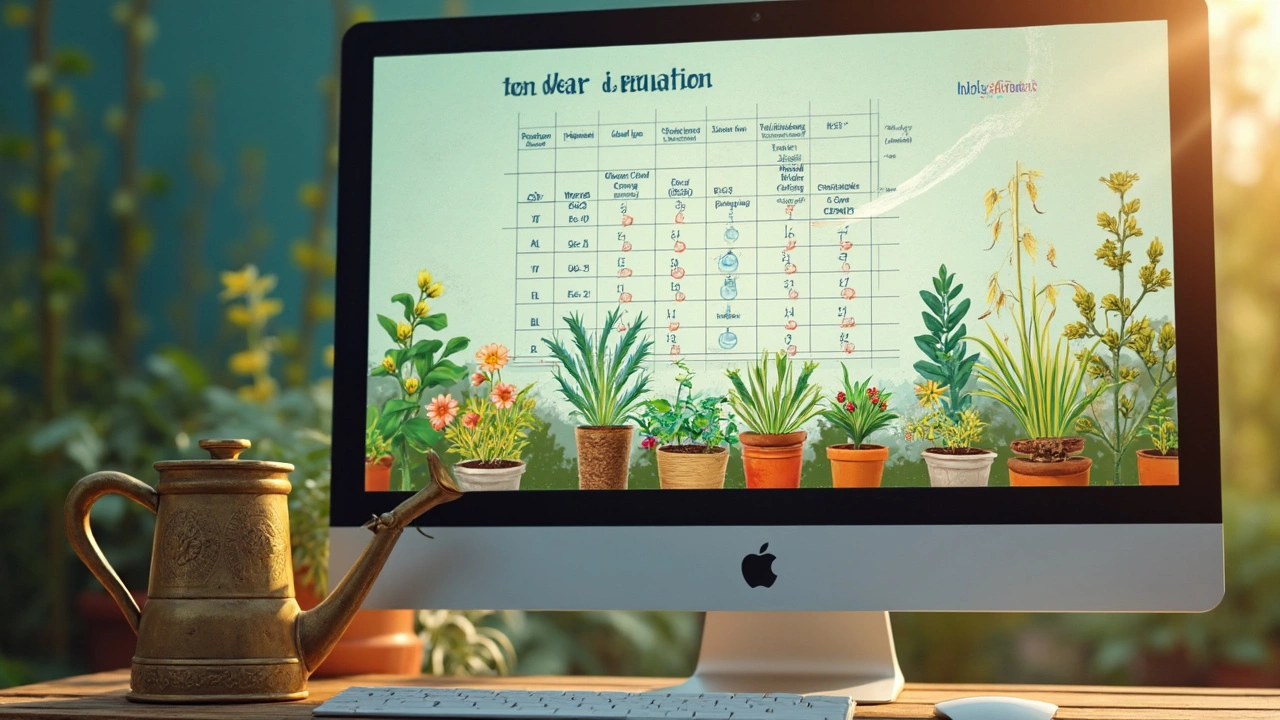
Adjusting Your System
Drip irrigation is all about fine-tuning, just like adjusting the volume on your favorite playlist. It’s easier than you think to get the most out of your setup, and it's essential for ensuring your plants get only what they need without wasting a drop.
Let’s start with some basics. The number of emitters you have and their flow rates are crucial. Begin by checking the emitters' specifications, usually available in gallons per hour (GPH). To match this with your garden’s needs, measure the area's size and how much water the plants usually require. A simple way to adjust the system is by increasing or decreasing the number of emitters or tweaking their positioning.
Nick Dodge, a gardening expert, once said, "Consistent adjustments based on plant needs and weather changes result in healthier plants and conserved water."
Here are a few steps to help you make those tweaks like a pro:
- Check the flow rate: Make sure the emitters are working at the specified GPH.
- Inspect for clogs: Regularly look for any debris that might block water flow.
- Adjust emitter positions: Move them closer to plant roots, especially if there are signs of wilting or dryness.
- Monitor and test: Set aside time to observe the system. Are certain areas too wet or dry? Make changes accordingly.
If you're tech-savvy, integrating soil moisture sensors can be a game-changer. These gadgets help monitor conditions in real-time, so you know exactly when to adjust your system.
Check out this handy table showcasing typical plant water needs to further refine your adjustments:
| Plant Type | Water Requirement (inches per week) |
|---|---|
| Vegetables | 1-1.5 |
| Fruit Trees | 2-3 |
| Lawns | 1 |
Remember, adjusting is not a one-time thing. Changes in weather or plant growth stages mean you’ll need to keep tweaking your drip irrigation system. But, once you get into the groove, it'll become second nature. Here’s to happy, hydrated plants and efficient water use!
Environmental Benefits
Switching to a drip irrigation system isn't just good for your garden—it's a win for the planet too. Unlike traditional watering methods, which can waste a ton of water through evaporation or runoff, drip systems deliver water directly where it's needed most. That means you're using water more wisely, which is great news for the environment.
How about some specific perks? First off, reduced water usage. Estimates suggest drip systems can cut water use by up to 50% compared to normal watering methods. Imagine half the water bill and still lush gardens. It's like magic!
Then there's nutrient efficiency. Drip irrigation minimizes runoff, which helps keep fertilizers and nutrients in the soil instead of washing them away. This not only supports plant health but also prevents groundwater contamination.
Lower energy consumption is another benefit. With less water to transport, especially if you're working off-grid or using rainwater harvesting, your energy usage drops. Reduced pumping needs can lead to fewer emissions when you're getting your water from a well or water tank.
Plus, you're encouraging better soil health. Lesser water runoff and evaporation mean your soil retains that precious top layer, home to countless organisms that help plants thrive.
To sum it up, opting for drip irrigation isn't just about keeping plants happy. It's about being a smart steward of the planet. And let's be honest, who doesn't want to save water, money, and energy all in one go?
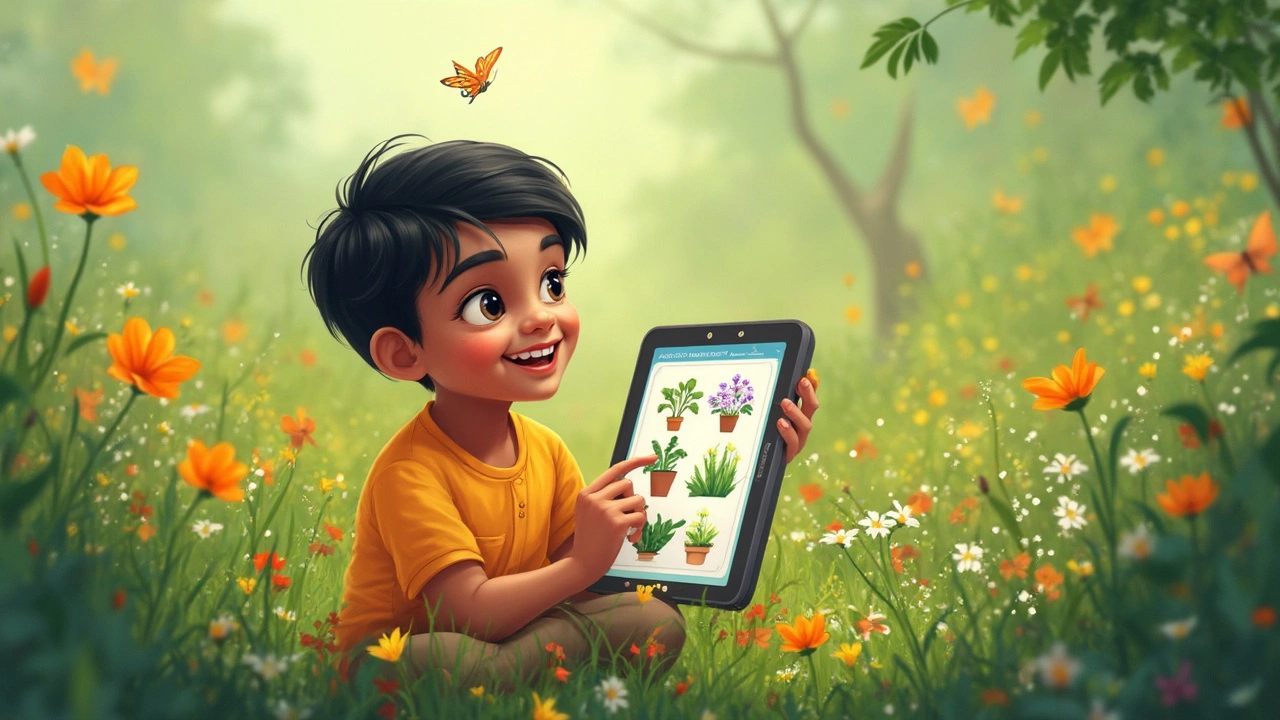
Tips for Efficient Use
Maximizing your drip irrigation system involves more than just setting it up. It's about tweaking and fine-tuning to get the most out of it. You don't want to waste water or money, right? Here are some handy tips to keep things running smoothly:
- Start With a Plan: Plot your garden layout and understand the area's watering needs before diving in. This saves you time and helps use water wisely.
- Inspect Regularly: Check for any leaks or clogs in your system. A blocked emitter can mean some plants aren't getting enough water while others drown.
- Use a Timer: Don’t want to wake up at 5 a.m. to turn on the water? Get a timer! It ensures things are done regularly and when it’s coolest.
- Adjust Seasonally: Remember, your garden’s water needs change. Use more in summer, less when it rains. It's both eco-friendly and budget-friendly.
- Mind the Wind: Wind can scatter water before it hits the ground. Try watering early when the wind is calmer, saving more water.
Just a bit of effort here and there can make your gardening adventure not only more successful but also kinder to the planet. And hey, who doesn’t love being efficient?


